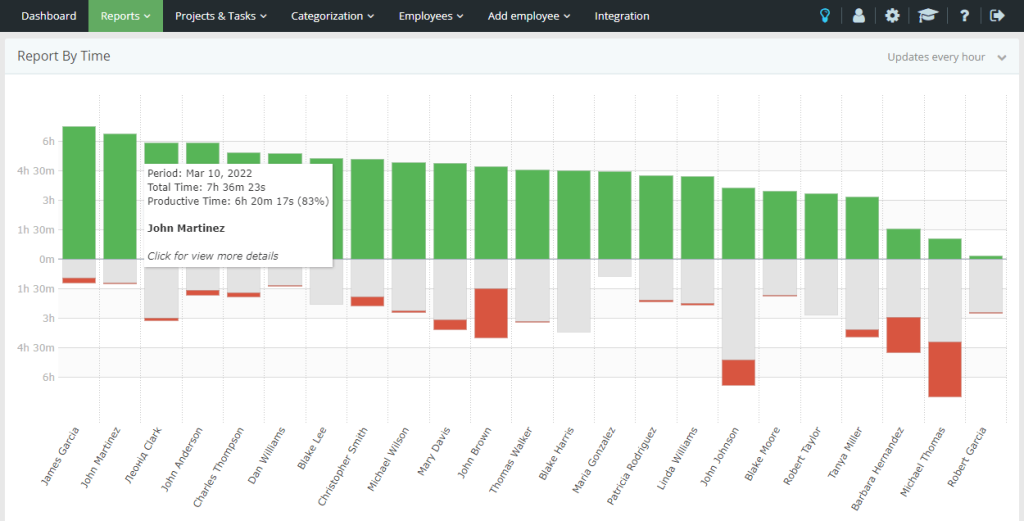The Illusion of Productivity: Why Presence Doesn’t Equal Performance
Many businesses assume that if employees are physically at work, they are being productive. However, workplace studies reveal a different reality—employees may spend hours at their desks yet accomplish very little. Distractions, inefficient workflows, and lack of motivation create an environment where work happens slowly, if at all.
Managers need to distinguish between employees who are truly productive and those who are merely occupied. A lack of visible progress can indicate deeper structural issues that impact overall efficiency and team morale.
Why Employees Show Up But Get Nothing Done
Understanding the root causes of low productivity is the first step toward making meaningful improvements. Many employees struggle to stay engaged and effective due to factors beyond their direct control.
Common Reasons for Workplace Inefficiency
- Unclear priorities. Without clear goals, employees spend time on low-impact tasks.
- Constant distractions. Emails, social media, and unnecessary meetings consume valuable working hours.
- Poor workload management. Some employees are overloaded, while others don’t have enough work.
- Lack of accountability. Employees without performance tracking may not feel the urgency to complete tasks efficiently.
- Burnout and disengagement. Overworked employees lose motivation and become less effective over time.
Advise: If employees seem busy but progress is slow, introduce structured task management and set measurable goals. Clarity helps employees prioritize effectively and focus on impactful work.
How to Boost Workplace Productivity and Improve Efficiency
To transform busy employees into high-performing contributors, companies must implement structured productivity strategies. Encouraging employees to work smarter rather than harder leads to significant efficiency gains.
Effective Strategies for Workplace Efficiency
- Set clear, measurable goals. Employees perform better when expectations are specific.
- Reduce unnecessary meetings. Fewer interruptions mean more time for focused work.
- Encourage deep work sessions. Employees should have dedicated time blocks for undisturbed, high-priority tasks.
- Balance workloads fairly. Prevent burnout by distributing tasks evenly across the team.
- Monitor progress with time tracking. Real-time insights help identify workflow bottlenecks and optimize performance.
These methods ensure that employees spend their time on activities that drive results rather than getting caught up in unproductive habits.
How Time Tracking Solves the Problem of Fake Productivity
Time tracking is a game-changer when it comes to identifying inefficiencies and ensuring employees stay engaged in meaningful work. With precise tracking, managers can spot where time is wasted and make adjustments before productivity suffers.

When used correctly, time tracking shifts the focus from hours worked to actual results delivered, allowing businesses to make data-driven improvements.
Benefits of Time Tracking for Employee Productivity
- Highlights productivity gaps. Helps detect where time is being lost.
- Encourages accountability. Employees are more mindful of their work habits when tracking time.
- Improves task prioritization. Managers can see what tasks consume the most time and adjust accordingly.
- Reduces micromanagement. With real-time tracking, managers spend less time checking in and more time optimizing workflows.
- Enhances motivation. Employees who see their progress are more likely to stay engaged.
Advise: Instead of using time tracking to micromanage employees, frame it as a tool for improvement. Show them how tracking their time helps eliminate unnecessary work and makes their tasks more manageable.
From Busy to Productive: Make Every Work Hour Count
Employees being present but unproductive is a costly issue for businesses. However, with clear goals, structured workflows, and effective time tracking, companies can turn wasted hours into meaningful contributions.
🎯 Take control of workplace productivity today! Sign up for Yaware.TimeTracker and see how better time management leads to higher efficiency. Get 14 days of free access now!

